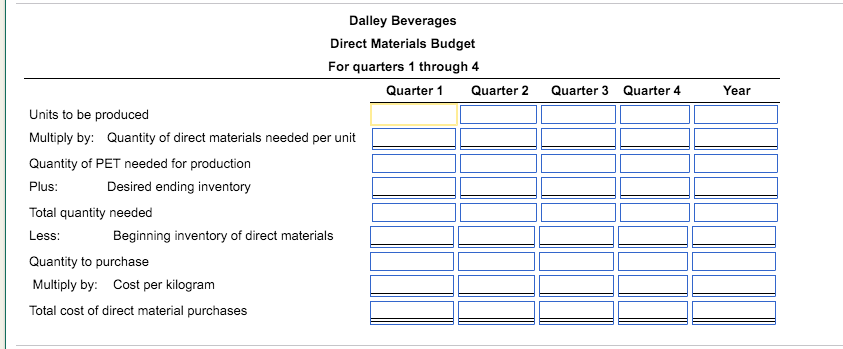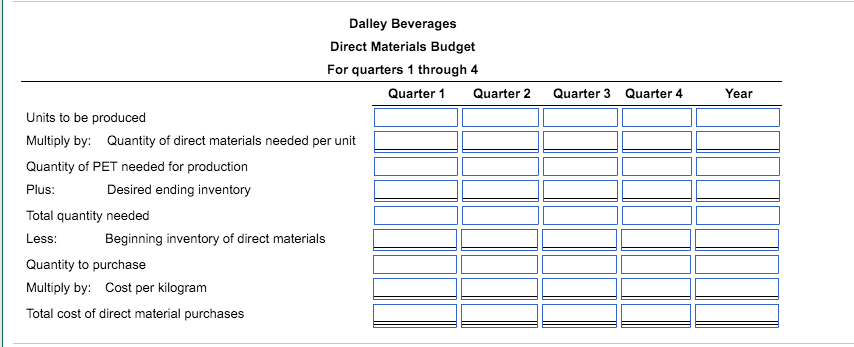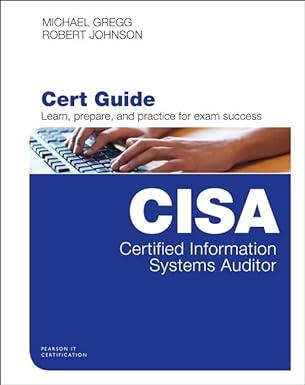Question
Dalley Beverages manufactures its own juice bottles. The bottles are made from polyethylene terephthalate (PET), a lightweight yet strong plastic. Dalley uses as much PET
Dalley Beverages manufactures its own juice bottles. The bottles are made from polyethylene terephthalate (PET), a lightweight yet strong plastic. Dalley uses as much PET recycled resin pellets in its bottles as it can, both because using recycled PET helps Dalley to meet its sustainability goals and because recycled PET is less expensive than virgin PET.
Dalley is continuing to search for ways to reduce its costs and its impact on the environment. PET plastic is melted and blown over juice bottle molds to produce bottles. One idea Dalley's engineers have suggested is to retrofit the juice bottle molds and change the plastic formulation slightly so that 20% less PET plastic is used for each bottle. The average kilograms of PET per juice bottle before any redesign is 0.015 kg. The cost of retrofitting the juice bottle molds will result in a one-time charge of $135,398, while the plastic reformulation will cause the average cost per kilogram of PET plastic to change from $5.00 to $5.20.
Dalley's management is analyzing whether the change to the bottle molds to reduce PET plastic usage should be made. Management expects the following number of juice bottles to be used in the upcoming year:  Requirement 1:
Requirement 1:  Requirement 1 continued:
Requirement 1 continued:  Requirement 2:
Requirement 2:  Requirement 2 continued:
Requirement 2 continued:  Requirement 3:
Requirement 3:  Requirement 3 continued:
Requirement 3 continued:  Please label which part of the question you are answering so that I may follow along. Also, be refrain from partially answering the question. Thank you!
Please label which part of the question you are answering so that I may follow along. Also, be refrain from partially answering the question. Thank you!
Step by Step Solution
There are 3 Steps involved in it
Step: 1

Get Instant Access to Expert-Tailored Solutions
See step-by-step solutions with expert insights and AI powered tools for academic success
Step: 2

Step: 3

Ace Your Homework with AI
Get the answers you need in no time with our AI-driven, step-by-step assistance
Get Started


